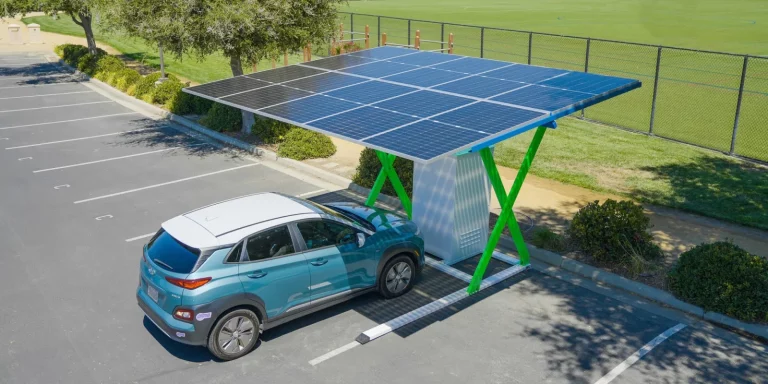Table of Contents

The global shift towards sustainable and eco-friendly transportation has led to significant advancements in electric vehicle (EV) technology. However, the adoption of EVs still faces challenges, with concerns about range anxiety and the availability of charging infrastructure. In response to these challenges, researchers and innovators have been developing cutting-edge solutions, one of which is the Solar Wireless Electric Vehicle Charging System. This innovative technology has the potential to revolutionize the way we charge our EVs while simultaneously harnessing the power of the sun for a greener future.
The Basics of Solar Wireless EV Charging
Solar Wireless Electric Vehicle Charging Systems combine two powerful concepts: solar energy harvesting and wireless charging technology. At its core, the system consists of solar panels installed on various surfaces, such as parking lots, roads, and even atop EVs themselves. These solar panels absorb sunlight and convert it into electricity. What sets this technology apart is its ability to transfer this energy wirelessly to waiting EVs, eliminating the need for physical charging cables
How It Works
- Solar Energy Harvesting: Solar panels, often integrated into canopies or directly into the road’s surface, collect sunlight and convert it into electricity using photovoltaic cells. These cells generate direct current (DC) electricity.
- Power Conversion: The generated DC electricity goes through an inverter to convert it into alternating current (AC), which is the type of electricity used by most EVs and the power grid.
- Wireless Power Transfer: The AC electricity is then fed into a wireless power transfer system installed beneath the surface of the road or in designated parking areas. This system uses electromagnetic fields to transmit power without the need for physical connectors.
- Reception by EVs: EVs equipped with compatible wireless receivers park over the designated charging spots. These receivers are capable of converting the transmitted electromagnetic energy back into usable electricity to charge the vehicle’s battery.
Advantages of Solar Wireless EV Charging Systems
Convenience: With no need to physically plug in, drivers can park their EVs over designated spots and have them charged automatically. This “plug-and-charge” convenience makes EV ownership more appealing and user-friendly.
Efficiency: Solar panels capture sunlight throughout the day, generating electricity even when vehicles are not actively charging. This surplus energy can be fed back into the grid or stored for later use.
Reduced Infrastructure Costs: Solar wireless charging systems can be integrated into existing parking lots and roadways, minimizing the need for additional charging infrastructure.
Minimal Visual Impact: The technology’s unobtrusive design helps maintain the aesthetic appeal of urban and suburban environments.
Environmental Benefits: By utilizing solar power, these systems reduce reliance on fossil fuels, leading to lower greenhouse gas emissions and a smaller carbon footprint.
Current Challenges and Future Outlook
While Solar Wireless Electric Vehicle Charging Systems hold immense promise, there are still challenges to overcome. Ensuring compatibility between various EV models and charging systems, optimizing efficiency, and addressing safety concerns are key areas of focus for further development.
Looking ahead, the integration of smart grid technology could allow these charging systems to communicate with utility companies, optimizing energy distribution and consumption. Additionally, advancements in solar panel efficiency and wireless power transfer technology will likely improve the overall effectiveness of these systems.